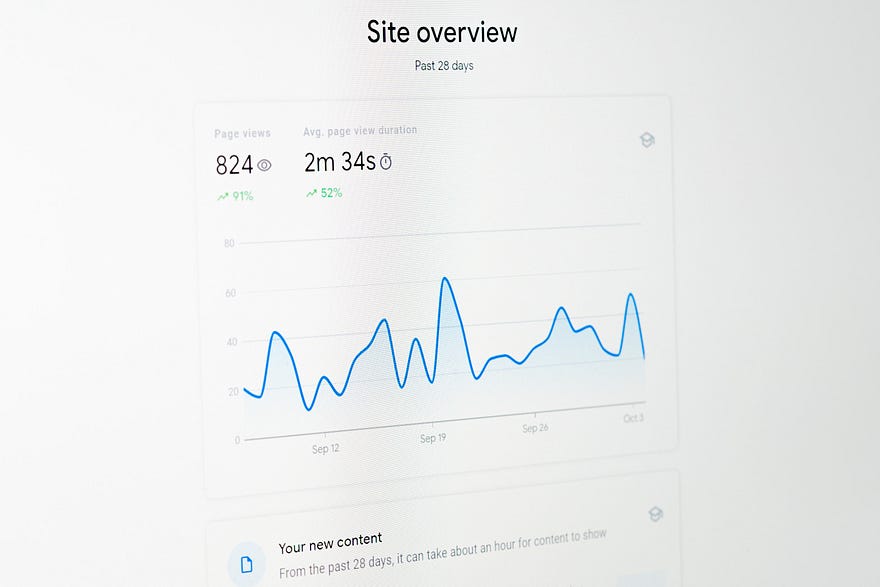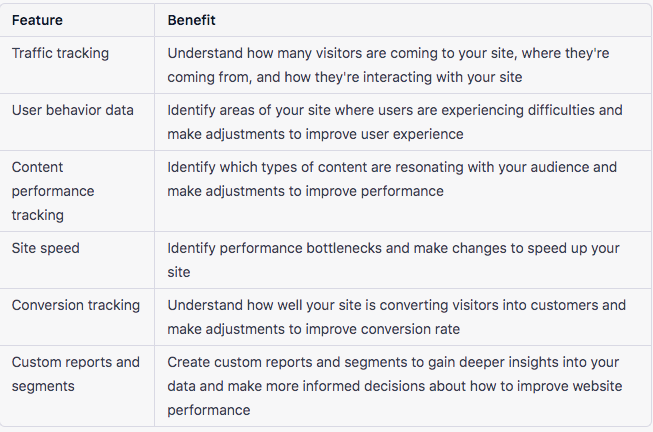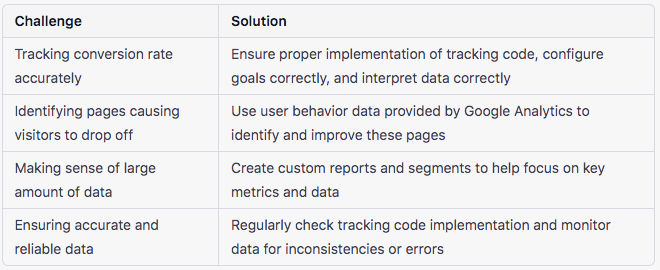Unlocking the power of data to drive website success with Google Analytics

Google Analytics is a powerful tool that can help businesses understand how their website is performing and identify opportunities for improvement. In this article, we’ll delve into some of the key features and capabilities of Google Analytics and provide tips on how to use them to improve your website’s performance.
What are the key metrics you track on Google Analytics to measure your website’s performance?
Monitoring website traffic is one of Google Analytics’ key advantages. You may acquire insights into the performance of your website and spot trends by knowing how many visitors you’re getting, where they’re coming from, and how they’re interacting with it. For instance, you might discover that a particular website or social media platform is driving a lot of traffic to your website, or that certain sections on your site are very well-liked.
Another important feature of Google Analytics is its ability to provide detailed information on user behaviour. This includes data on how long users are staying on your site, which pages they’re visiting, and where they’re dropping off. This information can help you identify areas of your site where users are experiencing difficulties, and make adjustments to improve the user experience.
Google Analytics also allows you to track the performance of your content. By tracking which pieces of content are performing well and which are not, you can identify which types of content are resonating with your audience and make adjustments to improve the performance of underperforming content.
Improving site speed is also important for website performance.
Google Analytics provides data on how long your website takes to load, which can help you identify any performance bottlenecks and make changes to speed up your site. This can be done by
- optimising images
- reducing the number of page elements
- making other adjustments.
Tracking conversions is an important aspect of website performance.
You can set up goals in Google Analytics to track things like how many visitors buy something, subscribe to a newsletter, or fill out a form on your website. This might assist you in determining how well your website converts visitors into paying clients so that you can make changes to raise your conversion rate.
Creating personalised reports and segments is one of Google Analytics’ major features. While segments can be used to isolate particular groups of individuals or behaviours, custom reports let you display data in a way that is most useful for your business. By using these capabilities, you may better understand your data and decide how to boost the functionality of your website.
What are the common challenges you’ve faced when using Google Analytics, and how have you overcome them?
Accurately tracking the conversion rate of their website is one of the difficulties experienced by many organisations using Google Analytics. This may be brought on by improper tracking code implementation, improperly defined goals, or wrong data interpretation. Organisations should make sure Google Analytics is implemented correctly and consistently if they want to overcome this difficulty.
The identification of the web pages on an organisation’s site that are driving away visitors is another typical problem. This can be the result of bad user experience, slow load times, or poor design. To solve this problem, businesses should identify and enhance these pages using the user behaviour data given by Google Analytics.
Table 1: Overview of Google Analytics features and benefits

Table 2: Common challenges in using Google Analytics

Keep in mind these tables are examples, and different organisations might have different challenges, and that also the solutions that work for one organisation might not work for others. However, Google Analytics is a powerful tool that can help you gain insights on how your website is performing and identify areas for improvement.
In conclusion
Google Analytics is a powerful resource that may assist companies in understanding the performance of their website and locating areas for development. Organisations may improve the performance of their websites by
- tracking website traffic
- recognising user behaviour
- optimising content
- enhancing site speed
- monitoring conversions
Leave a comment: In what ways have you used Google Analytics to improve your website’s performance and drive business results?
AMAZON ASSOCIATES DISCLOSURE:
Follow me on Twitter or LinkedIn. Check out my website.





0 Comments